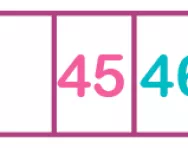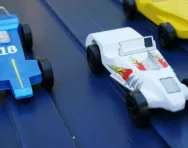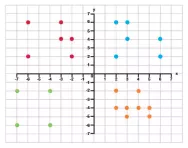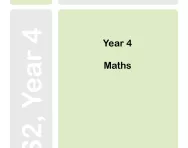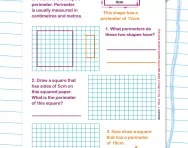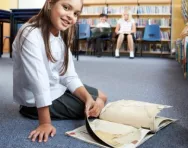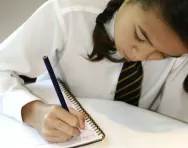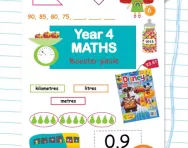Important update from TheSchoolRun
For the past 13 years, TheSchoolRun has been run by a small team of mums working from home, dedicated to providing quality educational resources to primary school parents. Unfortunately, rising supplier costs and falling revenue have made it impossible for us to continue operating, and we’ve had to make the difficult decision to close. The good news: We’ve arranged for another educational provider to take over many of our resources. These will be hosted on a new portal, where the content will be updated and expanded to support your child’s learning.
What this means for subscribers:
- Your subscription is still active, and for now, you can keep using the website as normal — just log in with your usual details to access all our articles and resources*.
- In a few months, all resources will move to the new portal. You’ll continue to have access there until your subscription ends. We’ll send you full details nearer the time.
- As a thank you for your support, we’ll also be sending you 16 primary school eBooks (worth £108.84) to download and keep.
A few changes to be aware of:
- The Learning Journey weekly email has ended, but your child’s plan will still be updated on your dashboard each Monday. Just log in to see the recommended worksheets.
- The 11+ weekly emails have now ended. We sent you all the remaining emails in the series at the end of March — please check your inbox (and spam folder) if you haven’t seen them. You can also follow the full programme here: 11+ Learning Journey.
If you have any questions, please contact us at [email protected]. Thank you for being part of our journey it’s been a privilege to support your family’s learning.
*If you need to reset your password, it will still work as usual. Please check your spam folder if the reset email doesn’t appear in your inbox.
Year 4 maths: what your child learns
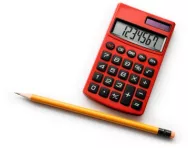
As with reading and writing, by Year 4 most children have a good grasp of the basic maths skills and their mental maths recall is becoming more automatic. It’s important by now that the children have a good knowledge of their times tables up to ten.
The children will be starting to develop their own ideas of how to solve maths problems, and how to check that their calculations are correct.
Calculators may be introduced in this year, and your teacher will show the children how to use them correctly. Maths is still taught daily through a mix of oral, practical and written work, and the children are given plenty of opportunities to see how maths links to other areas of the curriculum, and real-life situations.
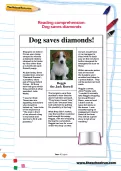
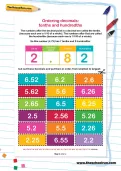
Start the Year 4 Learning Programme!
- Weekly maths & English worksheets
- Follows the National Curriculum
- Keeps your child's learning on track
Year 4 maths – what your child will learn:
Number and place value
- Counting in steps of 6, 7, 9, 25 and 1000
- Recognising place value of each digit in a four-digit number
- Counting backwards through zero to include negative numbers
- Rounding any number to the nearest 10, 100 or 1000
Calculating
- Adding and subtracting with numbers up to four digits using column addition and subtraction
- Knowing multiplication facts for all times tables up to 12 x 12
- Multiplying three-digit numbers by one-digit numbers
Fractions and decimals
- Finding fractions of quantities (for example: 2/6 of 48)
- Understanding equivalence between fractions and decimals
- Dividing one-digit and two-digit numbers by 10 and 100
- Rounding decimals with one decimal place to the nearest whole number
Measuring
- Converting between units of measurement
- Working out the perimeter and area of shapes
- Calculating with amounts of money
- Telling and writing the time using the 12-hour and 24-hour clock
- Solving problems involving converting between units of time
Geometry
- Classifying different types of triangles and quadrilaterals
- Recognising acute and obtuse angles
- Identifying lines of symmetry in 2D shapes
- Plotting coordinates in the first quadrant
- Translating shapes up/down and left/right
Statistics
- Interpreting and presenting data in bar charts and line graphs
- Solving comparison, sum and difference problems using information presented in bar charts, pictograms and tables
Try this at home
- Keep on with the times tables – automatic recall really does help at school and with homework. Practise in the car or on the way to school, set your child a challenge, play times tables games and, if necessary, offer a small reward as motivation
- If your child has weekly pocket money, encourage them to save and work out how much they will have after two, three or four weeks
- Go on a walk and give your child a compass so they can keep track of your direction
Fractions, decimals, basic geometry... maths becomes more challenging in Year 4. Help your child build on what they're learning at school and check that they understand the foundations of the new things they're learning with Year 4 maths worksheets (you can also search for fractions worksheets and decimals worksheets specifically or try the Y4 mental maths mini-test).
Check your Y4 child's progress in maths with our free Y4 maths Progress checks, three mini-tests for the autumn, spring and summer terms.
Explore the Year 4 English and Maths Learning Journey programmes



